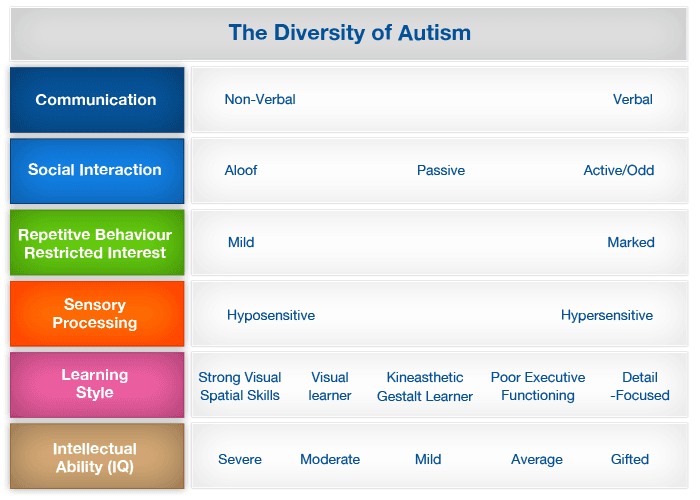
SMC is a well-established practise in Moonee Ponds. We pride ourselves on the quality of care and treatment provided to our clients. We always strive to provide evidence based best practise and truly care about the wellbeing of our clients and staff members. We are approachable and always willing to listen to parents/guardians, as your thoughts, feelings and expertise as a parent/guardian are invaluable.
Autism Spectrum Disorder (ASD) is a pervasive developmental disorder, which affects all aspects of a child’s development. Children with ASD have impairment in social relationships, communication, restricted/repetitive interests and impaired imagination skills. In conjunction with this children may have significant motor and sensory difficulties. The problems children with ASD experience are likely to continue through adulthood. No two children with ASD are the same, as symptoms and behaviours vary from child to child. Symptoms also vary from mild to severe.
At present there is no single, known cause for Autism. Most experts agree that Autism Spectrum Disorder is the result of a number of different factors that affect the developing brain. It has been well established that in some cases there is a genetic component associated with the disorder.
Some of the other factors that are believed to be potential causes include:
NB:// Not all children who have autism will present with all of these red flags.
|
|
Children with autism spectrum disorder are primarily visual learners and this should be taken into consideration when trying to teach or explain something to a child with autism. Children with autism are described as being 90% visual learners and 10% auditory learners. The use of visual strategies are strongly recommended to improve communication, help improve behaviour, facilitate learning and to develop independence skills.
Autism can be better understood if looked at as a continuum. Each of the core features can be looked at as a continuum of severity, as the degree of impairment in different features can vary. The severity of features of autism from one child to another is different as no two children with the disorder are the same. The effects of Autism can range from mild to severe and some features of autism can be context dependent. A pictorial representation of the diversity of autism is below:

This table was developed and created by the Australian Autism Education and Training Consortium, Autism Spectrum Australia, University of Canberra, Autism SA and Department of Education and Training WA.
Further information on autism can be obtained from the following websites:
http://www.activ.asn.au/parentportal/
http://raisingchildren.net.au/
http://www.autismvictoria.org.au/home/
http://www.connectgroups.org.au/
http://www.karenstagnitti.com/wp-content/uploads/2011/06/What-is-Pretend-Play-Full.pdf
Some useful fact sheets about autism can be obtained from Positive Partnerships.
References
- Howlin, P. (1998) Children with Autism and Asperger’s syndrome. Brisbane: John Wiley and Sons
- Quill, K. (1995) Teaching Children with Autism: Strategies to enhance communication and socialisation. Delmar: Cengage Learning.
-Tissot, C., Evans, R. (2003). Visual Teaching Stratergies for Children with Autism. Early Child Development and Care, 173, 425-433
- Australian Autism Education and Training Consortium. (2010) Parents and schools in positive partnerships.